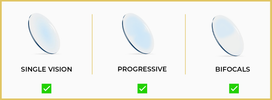

What is pupillary distance?
Your PD is the distance in millimetres between the centre of one pupil and the centre of the other pupil. This measurement ensures that we make your lenses with the prescription exactly where your eyes require them, resulting in superior vision!
Types of pupillary measurements
Single PD and dual PD measurements are the two types of PD measurements.
Single PD
The distance between the centres of one pupil and the centres of the other is referred to as the single or binocular PD measurement. A single PD measurement yields a single value, such as 60, 63, or 55 mm.
Dual PD
The distance between the centre of each pupil and the bridge of the nose is referred to as dual or monocular PD. Dual PD measurements consist of two numbers. For instance, if the dual PD is 31/33, the first number refers to the right eye and the second to the left eye.
Measuring your pupillary distance (PD)
What you will need:
1. A ruler in millimetres (mm).
2. A friend or a mirror.
3. Good lighting.
Step 1:
Stand in front of the mirror or have someone stand in front of you and hold the ruler on your eyebrows so it is steady and straight.

Step 2:
Align the '0' mark on the ruler with the centre of your right eye. Read the measurement that is falling on the centre of your left eye. That number is your PD.

All Done:
Your PD measurement is now complete. Make sure to double check and have someone assist you for more accurate results. You can now use this PD measurement for all your prescription needs!
For a more in-dept explanation please visit our guide.
By clicking Virtual Try-On you are granting us permission to use your devices camera in order to assist you in selecting the best frames for you.
None of your personal data will be saved, recorded, sent, transferred, used, or sold.
For more information please refer to our Privacy Policy.
Premium Lenses, Expertly Matched.
We carry a curated selection of premium lens brands to give you exceptional clarity and comfort. Not sure which lenses are right for you? Use our chat to get personalized lens recommendations!
FAQs
Can I use my vision insurance?
Yes you can! We provide invoices for all eyewear that you can submit to your insurance company. To learn more visit our vision insurance page. Vision insurance discounts are up to your insurer and coverage.
How do I know which lenses are right for me?
You can use our chat support to help you select the right lenses for your needs!
How much do you charge for shipping?
Orders worth more than CAD $100.00 in Canada, USD $100 in United States & Globally above CAD $250 qualify for Free Shipping.
Our standard shipping cost is based on area, country & postal code and shipping services selected, calculated by carrier.
How long will it take to get my order?
We aim to ship your order the same day. Standard shipping to the Greater Toronto Area takes 2-3 business days, within North America (USA & Canada) takes 5-7 business days, and international orders may take longer. For urgent orders, we recommend Express shipping.
Contact Lenses & Prescription Glasses are Processed from British Columbia.
My question is not listed above.
For more details, please check out our FAQ, or don't hesitate to reach out to us via chat if you have any questions!













